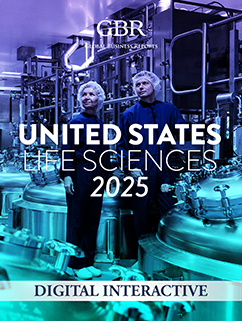
"As fuel demand declines, energy companies will look for another outlet. They find it in chemicals."
Dewey Johnson & Carlo Barrasa
SVP & GLOBAL LEAD, CHEMICAL MARKET ANALYTICS (DJ), VICE PRESIDENT (CB)
What were the main themes covered at the World Chemical Forum (WCF) organized by OPIS in September?
DJ: The main spotlight is commodity fundamentals; many people ask how broad and how deep the current downcycle is, and what the recovery looks like – is it a rapid, or a shallow, slow recovery?
But when we come out on the other side, it is going to be a different world. Carbon, and with it, the management of carbon, is a massive disruptor with several implications on feedstock availability, cost structure, and even the reconfiguration of refineries. All of this means change across different dimensions, and with change comes market volatility both in terms of product availability and product pricing. As fuel demand declines, energy companies will look for another outlet. They find it in chemicals. The other element of the energy transition is the decarbonization of energy and of the industry itself, driven by goals and aspirations at the country level; these measures will create operational constraints. Then, the valuation of carbon, be this in the form of taxes or incentive structures, will affect the competitive positioning of chemical companies.
Plastics represent another significant disruptor. Over 50% of global chemicals are consumed as plastics, so what happens with plastics invariably has a dramatic impact on the industry. Currently, the recycling rate across all the high-volume plastics is at 7% worldwide. In our base study, by 2050, this may increase to 15%. Unfortunately, the challenges of growing landfill volumes, incineration gases, and leakages to the environment are probably going to get worse before they get better. In a green case scenario, regulators create greater incentives for recycling and technology advances at a rapid pace; our view is that the recycling rate could increase to 23% by 2050.
Finally, another key disruptor is geopolitics. Different regions are generally separated by freight and duty in terms of commodity pricing, but with trade restrictions (via cross-border carbon mechanism, self-sufficiency policies enacted by different governments, etc.) the world’s geographies will separate further in terms of pricing, the market becoming more opaque, less efficient, and with a higher arbitrage between regions, which raises the risk level for market participants.
So how long do you anticipate this downcycle to last? Are there any exceptions or more resilient chemical classes?
DJ: There is a significant, mostly supply-driven, overbuild in most major value chains, including olefins, polyolefins, aromatics, and we do not expect to see a recovery until 2025-2026. A notable exception is in chlorine and caustic, where there is not a lot of capacity being added, with supply relying on many older plants with operational disruptions, which creates an upside for higher effective operating rates for producers in this space. The paraxylene value chain, which is a feedstock for polyester or PET, also started recovering this year after suffering a very deep plunge.
There seems to be a lot of excitement about opportunities created by bioplastics and biodiesels – is this well-founded in the context of Latam?
CB: Brazil is the second largest ethanol producer in the world, so it naturally needs to find an alternative outlet for that ethanol supply. I would temper that excitement for a few reasons. First, there are only a couple of ethanol-to-ethylene-to-PE plants in the world, and the biggest one, Braskem’s, is much smaller than the largest ethane-to-ethylene-to PE plant. That said, our studies indicate that using ethanol would go a long way in offsetting emissions as compared to producing ethylene via methanol and ethane.
Scale is also the biggest impediment for bio-naphtha, which is a byproduct of biodiesel production; on top of that, aggregating different streams of used vegetable oils and trucking these across long distances is quite carbon-intensive.
Policy, and especially the lack of a consistent policy, is another significant factor; Brazil has been very steady in its policy, which has helped the country create a significant footprint in biodiesel production, but this has not been the case for other countries.
How could Latam producers better face competition from the US and Asia?
CB: Latin America has always been a big sink for incremental production from the US for all plastics, and it will continue to be the case. Aside from bio-based capacity additions, we don’t see momentum in traditional capacity increases in the region.











